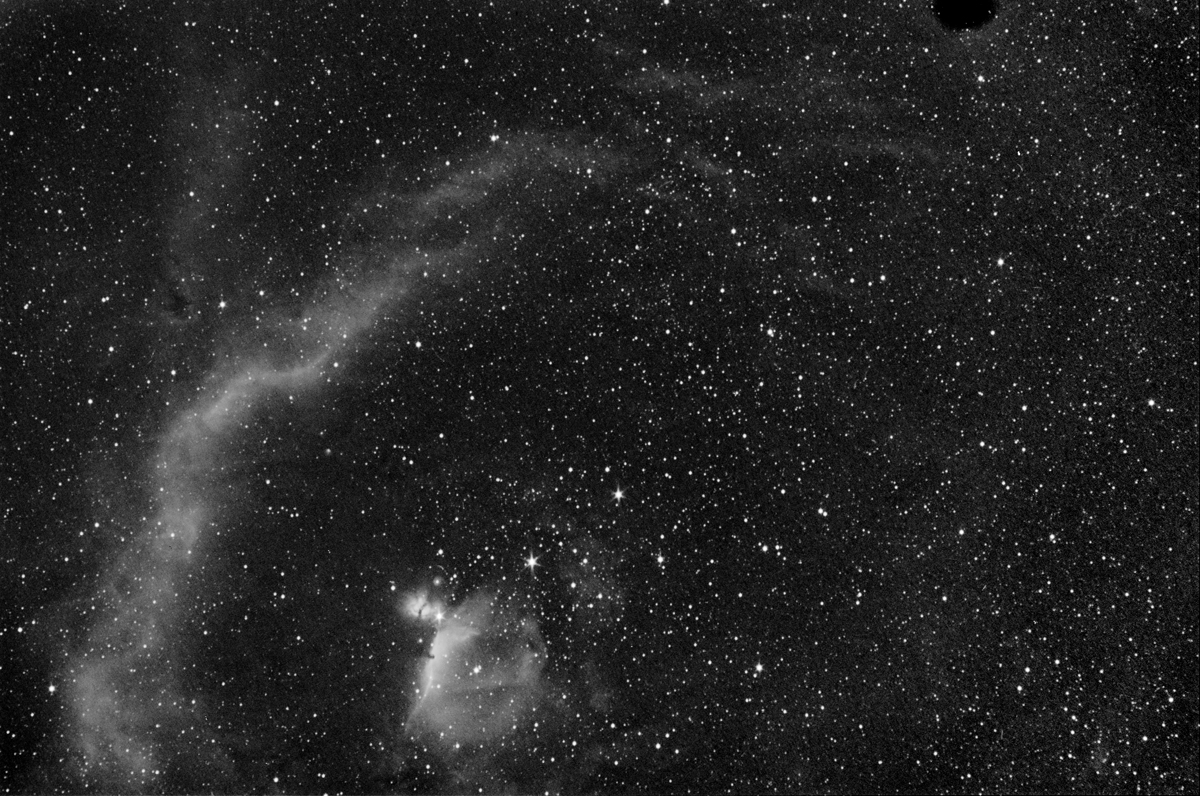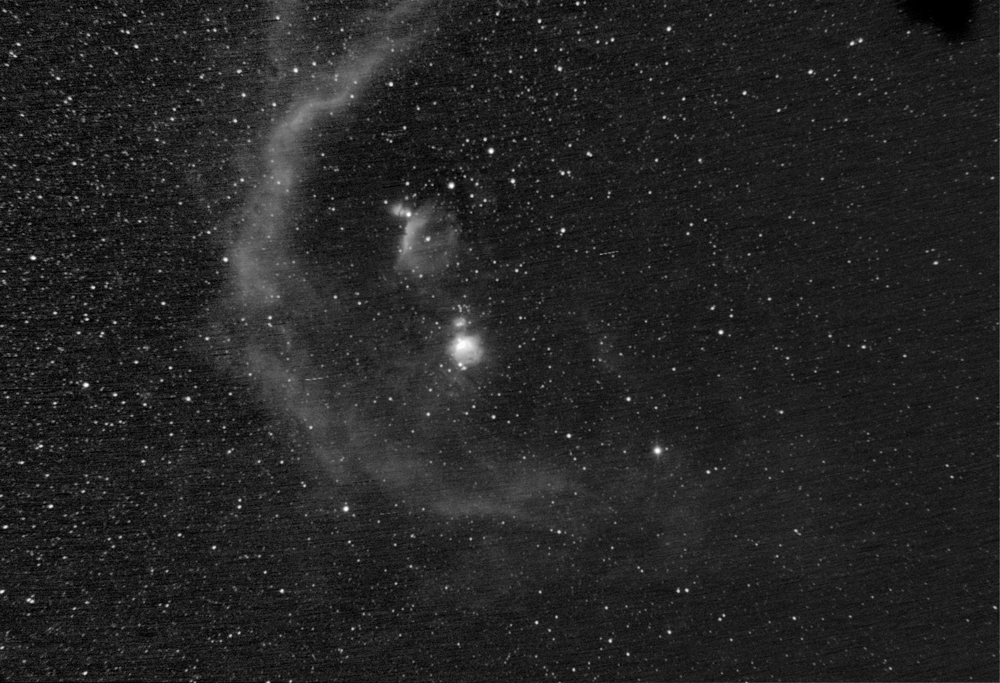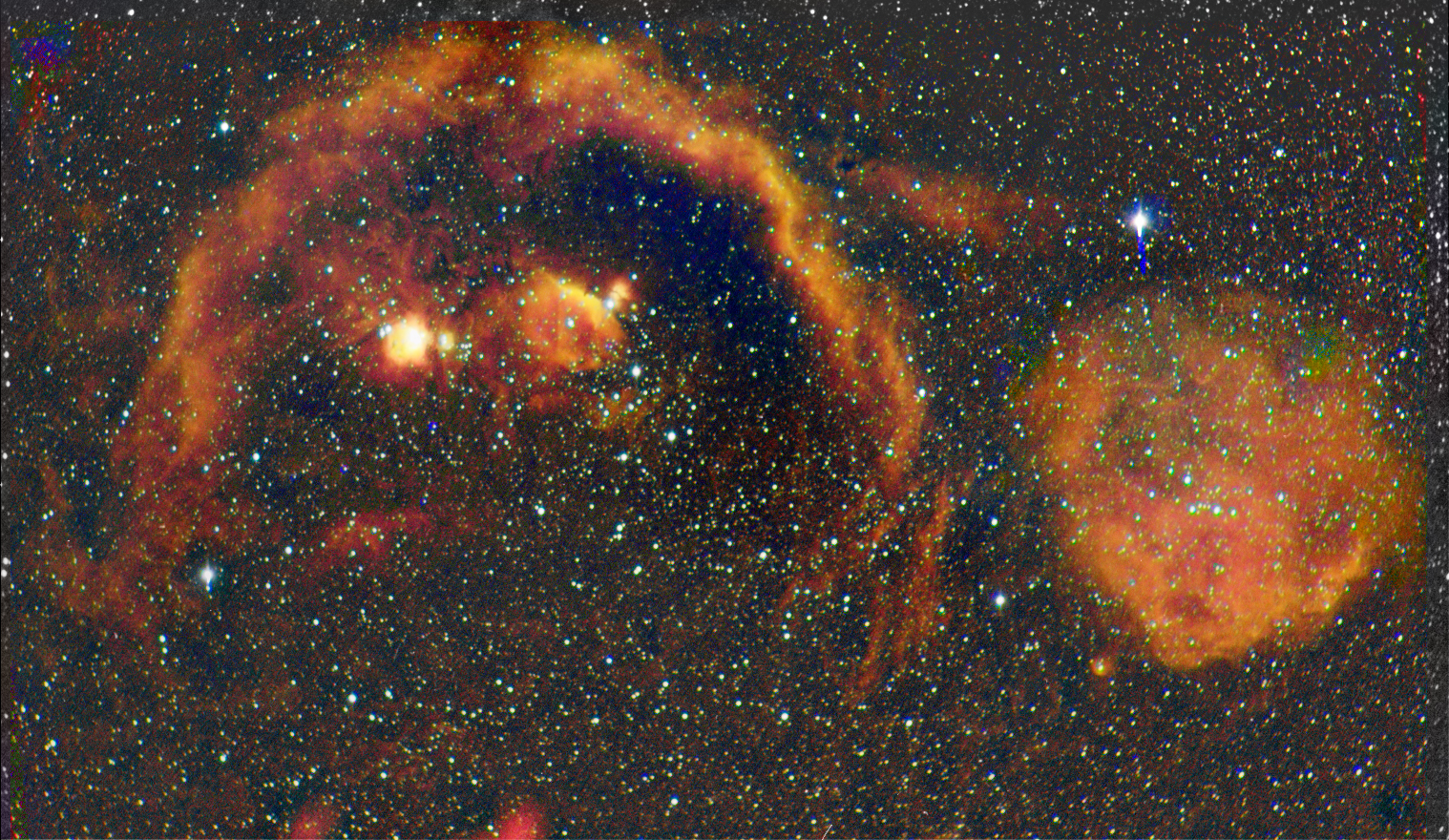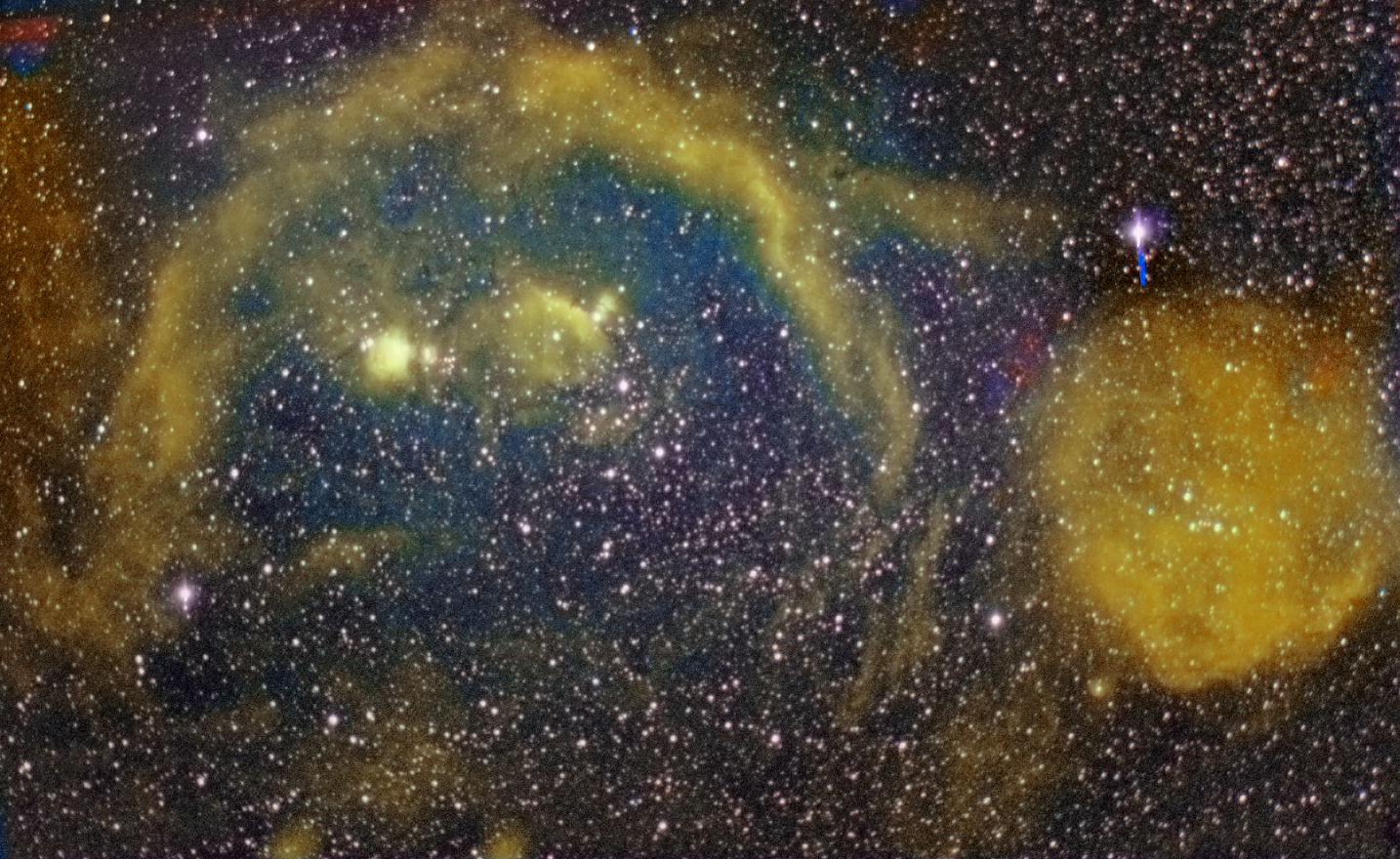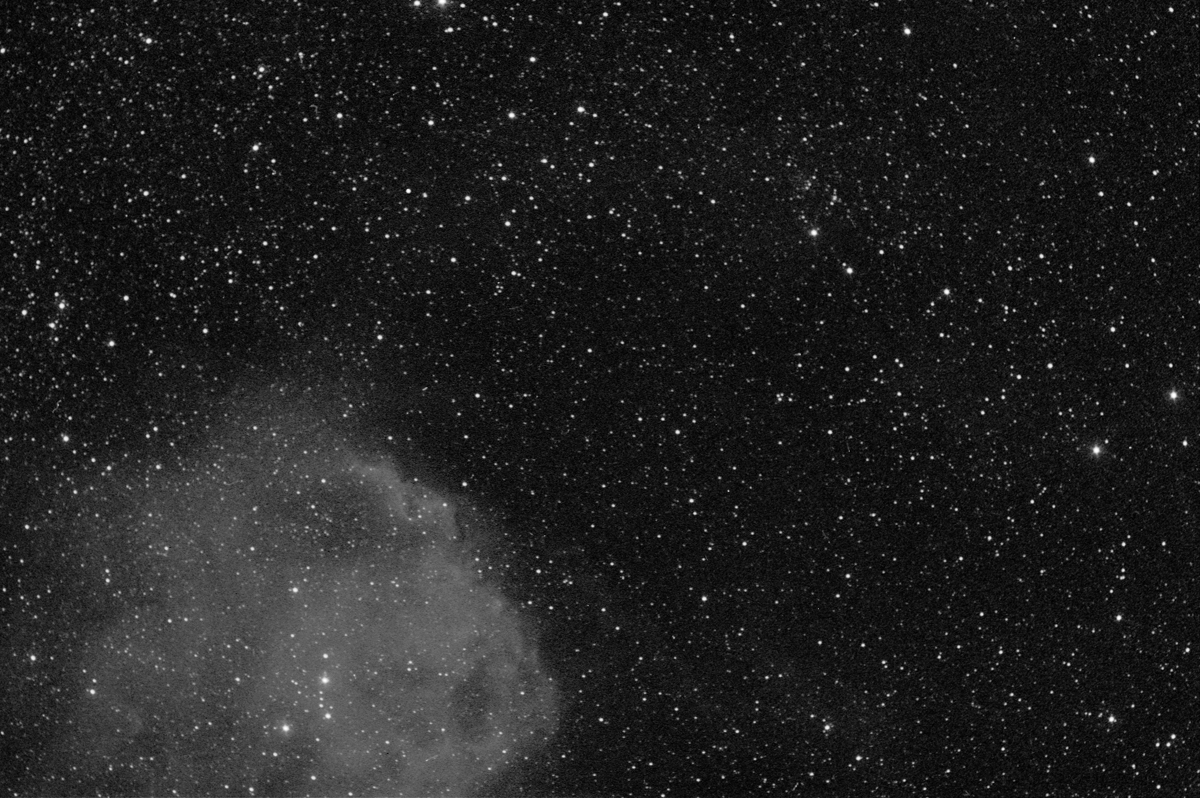
Combination of 12, 5 minute exposures using an H-alpha filter.
SBIG ST-8XE CCD. 50mm Nikon lens at f/4.
Orion is the favourite constellation of the majority of skywatchers. Situated on the celestial equator, it is easily visible from both hemispheres. It contains many bright stars, and a wide range of objects of all types, many of which are visible in these images.

The north-western region of Orion. The large nebula is surrounding the star lambda and the coarse open cluster Cr 69. It is designated Sharpless 2-274 .
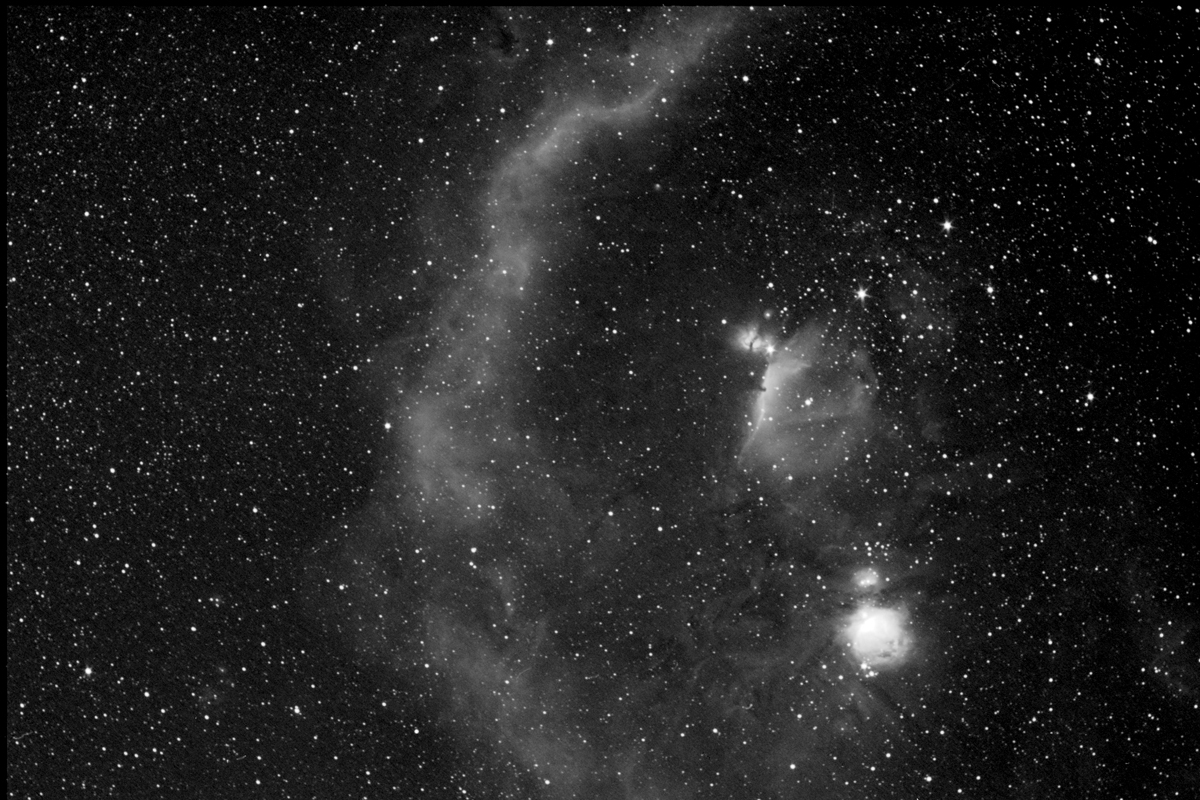
The bright patch below the centre of the image is probably the most looked at deep-sky object of all, the Great Orion Nebula, M42. Visible to the naked eye, this magnificent object is probably the easiest nebula to observe with a small telescope.
To the upper left of M42 are the Flame nebula (NGC 2024) and the HorseHead nebula (B 33), while surrounding the centre regions is the huge arc of 'Barnard's Loop' (Sh2-276). This is believed to be an ancient supernova remnant.
